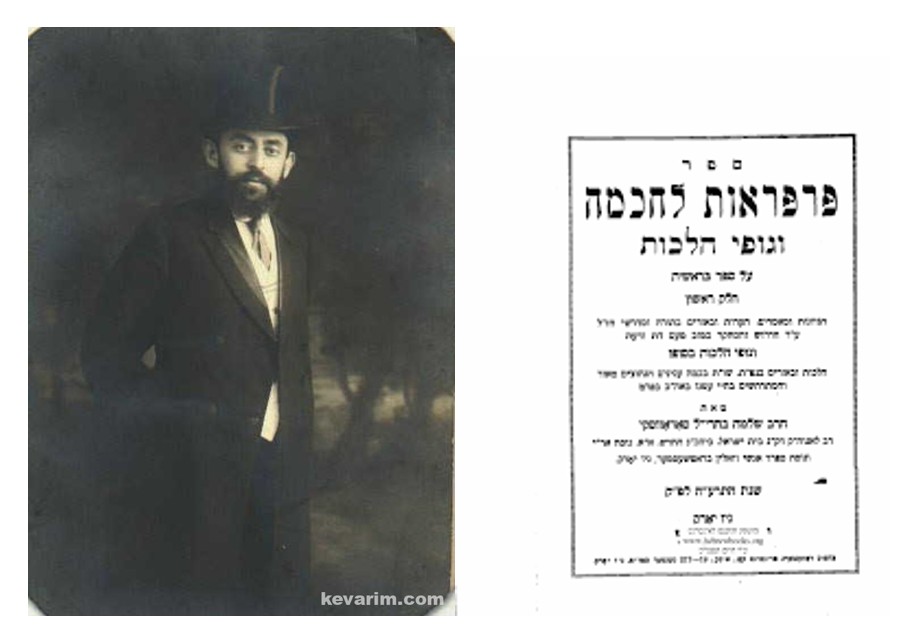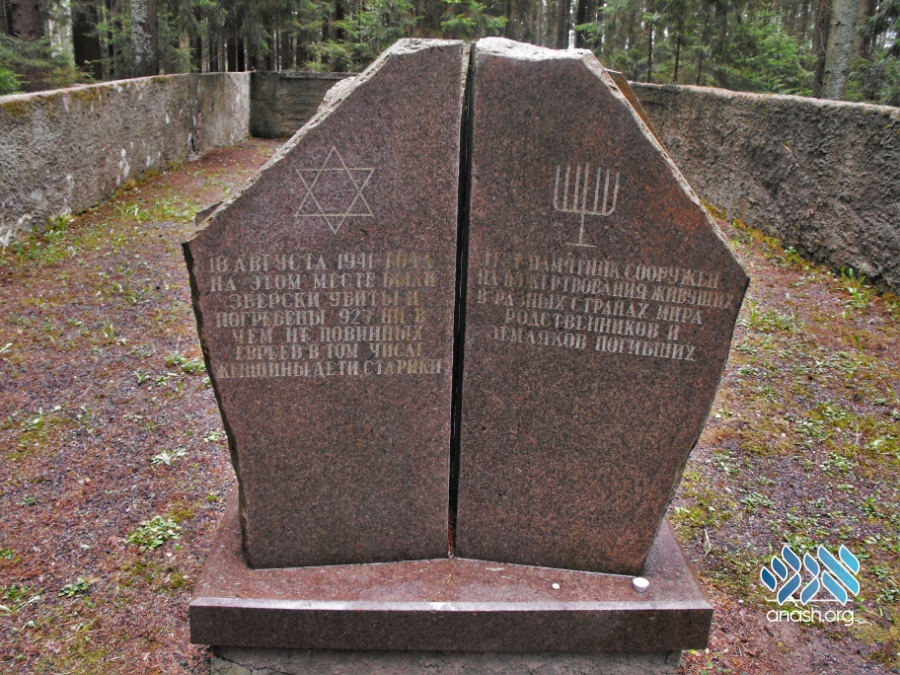The history of Tomchei Tmimim’s establishment is well-known and extensively documented. However, the branch of Tomchei Tmimim Zhembin is an integral and largely unexplored chapter of this time.
By Nochie Wolf – Anash.org
Intro
The history of Tomchei Tmimim’s establishment is well-known and has been extensively documented. However, the branch of Tomchei Tmimim Zhembin and its original centrality to the Tomchei Tmimim “movement” is an integral and largely unexplored chapter of this time and deserves to be told in its own right. In this piece and the next installment we will highlight some of its story; what made it unique, the Rebbeim’s involvement, and some of the significant events that occurred throughout its time.
All of the translations here are not perfectly literal in an attempt to capture the character of the original. Consult the original for the exact leshonos.
Establishment
Tomchei Tmimim was founded by the Rebbe Rashab and the Frierdiker Rebbe in 5657 to create a Yeshivah with a point of difference, “where learning alone is not the principal intent, rather [for the student] to carry out and fulfill what he has learned. And that his heart and soul should be wholly dedicated to his friends, colleagues, those close to him, the residents of his city, so that they too should act like this, following the Torah[1].”
In Reshimos[2] the Rebbe records a fascinating account of the Yeshivah’s founding. The Friediker Rebbe originated the establishment of a “Lubavitcher Yeshivah” but the Rebbe Rashab initially opposed the idea, saying “It is a misnagdisher shtik.” Ultimately, the Rebbe Rashab agreed to its founding as one of the gifts he bequeathed granted the Friediker Rebbe on the occasion of his wedding. Soon after, following a visit to the Ohel, the Rebbe Rashab cautioned the Friediker Rebbe, “But know what you are taking upon yourself.”
However, Tomchei Tmimim was not the first time bochurim came to Lubavitch to further their Limud Hachassidus And Inyonei Avodah. Already from the times of the Alter Rebbe and throughout the Nesius of multiple Rebbeim, Yoshvim – older bochurim or married yungerleit– would come to the Rebbe’s daled amos to hear Chassidus from the Rebbe and seek counsel from elder Chassidim, albeit operating differently at various times. In the few years preceding the establishment of Tomchei Tmimim, the Rebbe Rashab had organized a group of bochurim to learn in Lubavitch under his tutelage to counteract the growing influence of the Haskalah and Zionist movements.
Eight of the most gifted among these Yoshvim learning in Lubavitch during 5656 – “a year that the group produced good fruit[3]” – were selected to be the founding students of the new Yeshivah. They were now to enter a comprehensive framework of an official Yeshivah; organized schedules, teachers, and arranged dorm and board. This took place in Elul 5657 and following Tishrei, together with Reb Shmuel Gronem Esterman, who was appointed to head the Yeshivah, departed for Zhembin where the Yeshivah was to be established. Throughout the first year, ten additional bochurim were accepted to the Yeshivah, and “from these the world was founded[4].”

What remained in Lubavitch is not entirely clear, but from the various descriptions of the time it seemed as though Zhembin was the primary Yeshiva designed to educate the highest echelon of prospective students and in Lubavitch the looser system of Yoshvim remained under the tutelage of Reb Chanoch Hendel Kugel. This continued to evolve as the Yeshiva in Lubavitch grew and ultimately became the principal branch of Tomchei Tmimim. It is important to note the Friediker Rebbe referred to Reb Chanoch Hendel Kugel, who led the Lubavitch branch of Tomchei Tmimim as the leading mashpia of Tomchei Tmimim and Reb Shmuel Gronem as his subordinate (see picture below).[5]
The Yeshiva
Reb Shmuel Gronem was a chassid known for his absolute dedication to and thorough knowledge of Chassidus. As a young man, he supported himself by working as a miller in a granary, and only by night could he dedicate himself to learning. Because of his poverty, he couldn’t afford candles, and in order to learn he would read by the light of the moon
In his old age the strain this caused his eyes led to his loss of eyesight before it was restored through surgery. Once, after hearing biur al pi chassidus from the Rebbe Rashab, he asked the Rebbe for the source because it appeared new and unfamiliar. The Rebbe Rashab responded that it was also a novel teaching for himself, and he had recently discovered it in a handwritten teshuva of the Alter Rebbe[6].
His commitment to his longtime teacher; the famed chossid and Rav of Zhembin, Reb Avrohom Landau (or Reb Avremke Zhembiner) was legendary and the many years he spent in his presence formed the wellspring of teachings and stories he shared with the bochurim of Tomchei Tmimim.

He was tremendously dedicated to instilling in the bochurim the teachings and values of Chassidus and he hugely elevated their levels of limmud hachassidus. Famously, he would give shiurim on the maamorim of the Rebbe Maharash and Tanya, with the latter transcribed in seforim published by his students. He would also fabreng with the bochurim twice a week.
Originally, Reb Shmuel was also responsible for managing the Nigleh in Yeshivah and he served as a Mashgiach until in 5661 a dedicated Nigleh Mashgiach was hired. A Rosh Yeshivah was never hired because Rebbe Rashab felt that the individually oriented guidance of a Mashgiach was more beneficial than the shiur model[7]. Some of the bochurim, in addition to the Iyun and Girsa in Gemara, also applied themselves to Limmud Halacha, becoming proficient in multiple sections of Shulchan Aruch and several, such as Rabbi Shneur Zalman Gorelick, the first Rav of Kfar Chabad, later recieved Semicha.

Though Reb Shmuel Gronem inspired tremendous growth in the bochurim’s Limmud Hachassidus, the Rebbe Rashab was concerned about a lack of development in the bochurim’s personal Avodah. In a Yechidus with Reb Shmuel Gronem, the Rebbe Rashab commented that ultimately “Zhembin isn’t Lubavitch,” and after Reb Shmuel Gronem misunderstood his intent to be referring to the physical location, the Rebbe Rashab responded, “No, the educator.” The Rebbe Rashab felt that the influence that Reb Chanoch Hendel had on the bochurim in Lubavitch in regard to Avodah was lacking in Zhembin.
The Rebbe Rashab occasionally sent Reb Chanoch Hendel to assess where the bochurim were holding, ostensibly to address this insufficiency. Once, sensing that they were lacking in their commitment to Avodas Hatefillah, he fabrenged with them at length about its pertinence in Avodas Hashem and at that farbrengen Reb Chanoch Hendel composed the niggun the Zhebiner Hartz.
Another emphasis of the new Yeshiva was to refine the bochurim’s character and cultivate a deep sense of Ahavas Yisroel amongst them. In many letters, the Rebbe Rashab delineates this as one of the key purposes of the Yeshivah’s founding and for this reason he instructed that the stronger and more experienced bochurim should be paired with bochurim weaker in their learning for parts of the day[8].
This is highlighted in a fascinating turn of events regarding the Yeshivah’s technical setup. One of the unique qualities of Tomchei Tmimim was that the dorm and board were organized by the Yeshivah. In the initial meeting regarding the founding of Tomchei Tmimim, the Rebbe Rashab identified the prevailing meal system in most yeshivahs- where bochurim would be subjected to the condescending attitude of those giving them food- as contributing to the crisis of secularization.
Originally, to combat this issue, the Yeshivah provided money to each bochur, and he could choose where and how to spend it. Soon after though, the Yeshiva decided it would be more beneficial that everyone eats together. After consulting with the Rebbe Rashab it was discovered that bHashgocho Protis, a chossid from Zhembin, Reb Leib Chefetz, was contending with serious financial issues and shifting the responsibility of cooking to him would solve both issues. But, before confirming this decision the Rebbe Rashab instructed that the Friediker Rebbe write a letter to the bochurim requesting their agreement to this new arrangement
“I am suggesting that all the bochurim… should all eat together at the home of Reb Leib Chefetz… Now, our intent is not at all to decrease the expenditures, rather the intent is to provide a twofold benefit a) all of you should eat together which we feel will be beneficial b) that our aforementioned friend can support himself as he is a tremendously poor man… We do not want to compel the bochurim against their will, but if they do have even a small amount of virtuous character; to feel for another and to concede on one’s own desires (especially a fantasized one) for another, they should agree wilfully and with their soul’s consent… If they do not agree, we will not force them, heaven forbid, but we will know that Chassidus has not impacted them at all and they are distant from such virtuous character…[9]”
The Rebbeim
Despite the Rebbe Rashab’s significant preoccupations and travels relating to public matters and his health, he was intimately involved in all matters of the Yeshivah. This was both regarding larger issues such as new teachers, financial dilemmas, and major aspects of Yeshivah policy, and smaller concerns, such as specific bochurim asking reshus for Yom Tov travel and the struggles of individual bochurim.
Additionally, the Rebbe Rashab provided significant guidance to bochurim in their Avodas Hashem and Limmud Hatorah. And while it was more difficult for bochurim to arrange Yechidus, there were chances to seek counsel from the Rebbe Rashab face-to-face and in written correspondence. Occasionally, the Rebbe Rashab would even take bochurim with him on a datche break and designate multiple hours each day to discuss dilemmas they were facing.
In several letters, responding to the reports of the bochurim’s application to learning and Avodas Hashem, the Rebbe Rashab expressed his great satisfaction at the successes of the Yeshivah. When the bochurim from Zhembin came to Lubavitch in Elul 5658 they each entered Yechidus and the Rebbe Rashab received a detailed report from Reb Shmuel Gronem on each individual’s development. Upon seeing their amazing progress and that “it was impossible to recognize them as they had undergone the ultimate transformation[10],” the Friediker Rebbe writes, “I don’t have enough words to describe the joy and delight it caused the Rebbe Rashab[11].”
Event 1: Debate
By 5660, the Yeshivah in Zhembin had grown to almost forty bochurim and the reputation of Tomchei Tmimim was fast growing. There was even an excess number of applicants arriving in Lubavitch to be admitted to the Yeshiva, so the Friediker Rebbe made new qualifications for applying; one had to bring a letter of recommendation from his local Rav.
At this time three bochurim- Elchonon Morozov, Yerucham Gorelick, and Shlomo Sodovsky- who had been part of the first group sent to Zhembin remained in Lubavitch after the rest of the Yeshivah, who had come to Lubavitch following a fire in Zhembin (see next installment), had moved to Kuvlitz.
Whilst there, they were party to a conversation regarding Chassidus and how it views the purpose of man in serving Hashem; present in this setting was a Mr. Weinstein, a teacher from the local Haskalah school. Hearing the nature of the discussion, he began to challenge those present, questioning their beliefs and debating the truth of the Torah.
One of the bochurim, Shlomo Sodovsky, had been exposed to the works of Haskalah as a youth and, therefore, was well aware of their worldview and true intentions. He responded to all of Mr. Weinstein’s attacks with patient and thorough responses, uncovering the flaws in his arguments. He followed this with a strong and impassioned denunciation of the Haskalah movement at large.
“All your teachings originate in lust, jealousy, and self-seeking respect… with this you attempt to indoctrinate and “fatten the young sheep!” And all this still before they have opened their eyes and still cannot choose between good and bad. Are you not equivalent to the “man [who] rises upon his neighbor and slays him?!” … How many souls have been excised and how many pure ones have been estranged from their parents… you have led them to a place of terror and shoved them to the depths of wasteland!”

Thoroughly defeated, the teacher had no response and resentfully left, embarrassed before all those present. Upon hearing about the episode, the Friediker Rebbe was displeased and commented that these types of debates only generate negative effects. Nonetheless, after talking over the affair with Shlomo Sodovsky, the Friediker Rebbe found him to be someone with significant pedagogical capability and he consequently dedicated time to learning together “Chanoch L’naar Al Pi Darco,” and discussing matters of education with him.
Eventually, this episode did consequate some negative outcomes, just as the Friediker Rebbe predicted. Following his defeat, Mr Weinstein wrote a scathing article in one of the Haskalah journals, propagating many harsh falsities about Tomchei Tmimim and its students. While his extreme claims were rejected by most and, as the Friediker Rebbe writes, even strengthened the resolve of those dedicated to Tomchei Tmimim, it did affect a minority who accepted his allegations and some ceased their financial support. However, in a letter to a concerned Chossid, the Friediker Rebbe noted that “I am overjoyed by this,” because either way, “we do not want to accept donations from such people.”
Furthermore, as recounted in the Frierdiker Rebbe’s diary[12], almost two years later the regional police chief came to Lubavitch to close the Yeshivah on account of being an unregulated school. The issues were ultimately resolved, but, during this process, the police chief commented how the entire ordeal was as a result of slander made by this local school teacher.
[1] אג”ק אדמו”ר מוהריי”צ ח”א ע’ שא
[2] רשימות היומן ע’ שלה
[3] אג”ק אדמו”ר מוהריי”צ ח”ב ע’ קח
[4] המשך המכתב שבהע’ 1
[5] הקדמה לקונרוס תפילה
[6] https://www.kramim.info/article/%D7%AA%D7%A0%D7%99%D7%90-%D7%9E%D7%9B%D7%AA%D7%91%D7%95-%D7%A9%D7%9C-%D7%94%D7%A8%D7%91-%D7%96%D7%99%D7%A1%D7%9C%D7%99%D7%9F-%D7%A2%D7%94/66296078
[7] אג”ק מוהרש”ב ח”א ע’ רכז
[8] אג”ק מוהרש”ב ע’ רו
[9] אג”ק מוהריי”צ ח”א ע’ א
[10] רשימת היומן ע’ רמה
[11] אג”ק מוהריי”צ ח”י ע’ שסה
[12] קונטרוס ומעיין ע’ 37



He moved to America and was a Rav in cities upstate New York (Albany, Rochester etc). Of most “chassidish” interest: The Hayom Yom of 11 Nissan – about birthdays – was from a letter of the Frierdike Rebbe to Rabbi Shlomo Sadovsky.